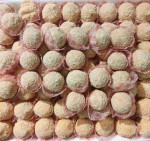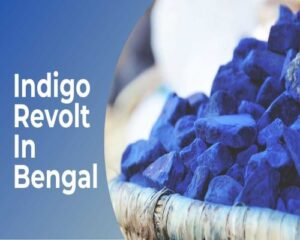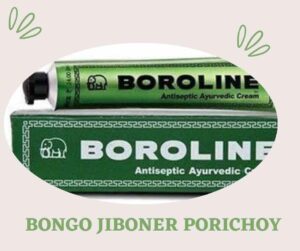Bengalis can not live without sweets. It has an important place in all the social occasions of Bengalis. The famous Bengali sweets are in huge demand and are also exported all around the world.

In ancient times, Bengalis entertained guests with Gur (sugar candy), made from sugarcane, palm, or date juice. The name of ancient Bengal was Gauda Banga. The term originated from Gur or molasses that were harvested in abundance in the region. Earlier, Bengali sweets were made from jaggery and coconuts. The practice of using Chhana(cottage cheese) came much later with the colonial invasions. This discovery revolutionized the sweet industry in Bengal.
Different regions of Bengal have their signature sweets. Murshidabad/ Burdwan/ Bishnupur from India and Dhaka/ Nator was the pioneer of sweets of Bengal- undivided Bengal. There are some fascinating tales related to the invention of these famous Bengali sweets.

Jolbhora – Chandannagar
Jolbhora Talsas is a sweet shaped like a tal or kernel of the palm fruit filled with sweet Nalen gur inside. The sweet was created at the event of Jamaisasthi by Surjya Modak around 200 years ago.
According to stories, the Bandopadhay family of Chandannagar requested these sweets for their son-in-law. When he took his first bite of the sweet, the Gur(Jaggery) just spilled out. A unique taste of this sweet draws several sweet lovers from different parts of the state.
Also Read: Chandannagar The French Town Of West Bengal
Ledikeni – Kolkata
Ledikeni sweet is named after the wife of Charles Canning, who was the Governor-General of India during the 19th century. Bhim Chandra Nag, a legendary sweet maker, prepared this sweet to commemorate Lady Canning’s visit to India. The taste of this sweet delighted her. It remained her favorite sweet for the rest of her life. Hence the sweet got the name Lady Canny or Ledikeni, and the name continues to hold.
A darker version of lady Canny is known as Kalo Jam.
Babarsha – Khirpai
Babarsha is a popular sweet of Khirpai, a city in the district of West Midnapore.
Babarsa or Babarsha is sweet in the Khirpai area of Midnapore district (now Jhargram district) in West Bengal. Babarsa is mainly made of flour, milk, and ghee.
Between 1740 and 1750 AD, the Bargis attacked the town of Khirpai more than once. The people began to leave the city to escape the Bargis’ attack. At that time, a man named Edward Babarash helped locals pushed the Bargis away. To show his gratitude, a local sweet merchant prepared a dish called Babarsa and presented it to Edward. Since then, the dish is popular as Khirpai Babarsa based on the name of the city and its savior.
Mecha Sandesh – Beliatore, Bankura
The sweet makers have been preparing it for generations now, and it has remained restricted to this region alone.
The story goes that this dry part of southern Bengal had a shortage of milk. Following a demand for sweets from the Malla kings and the people, the mecha Sandesh was born. Its preparation is different from other famous sweets. It is made using Bengal gram flour, other cardamom powder, cashew nut powder, ghee, khoya, and sugar.
Roshogolla – Kolkata
Nabin Chandra Das was the first to make sponge rasagolla in 1868. He invented this in his small shop in Baghbazar, Kolkata. Das dedicated the sweet to his wife, Khirodmoni Devi. He desired to become a confectioner when he would grow up. But he failed many times before he was successful in making the Rosogolla. These white cottage cheese balls in sugar syrup created a revolution in the sweetmeat industry and set the trend for the sweets of today.
Abar Khabo Sandesh – Kolkata
This Sandesh is another popular sweet which is made of cashews, kheer & raisin. Nabin Chandra Das invented this sweet. Maharani Swarnamayee Devi of Cossimbazar once requested Nabin Chandra Das to make a new kind of sweet for her. When he served this sweet to her, Maharani had it and exclaimed Abar Khabo (Want to eat again), and sweet was named following her exclamation.
Sitabhog and Mihidana – Burdwan
The Sitabhog -Mihidana of Burdwan is mouth-watering and is one of the famous sweets of Bengal that is famous all around the world.
The sweet was first discovered when viceroy Lord Curzon first came to Burdwan in 1904.
To impress him, the then King of the area, Vijaychand Mahatab, order Vairab Chandra Nag, a sweet maker, to prepare something new and unique. Vairabchandra Nag prepared two unique dishes named Sitabhog and Mihidana. Lord Curzon never had such sweet ever before. He praised and thanked Vairabchandra Nag for the sweets that taste amazing. After this incident, the quality and name of these two sweets reached all over the country and abroad.
Also Read: Lord Curzon, The Mastermind Who Partitioned Bengal In 1905
Kheer Kadam – Malda

Famous Bengali sweet Rosokodombo or Kheer Kadam is named after the Kadamba tree. Once Mahaprabhu Sri Chaitanya traveled to Malda and rested below a Kadam tree. To make it memorable, the confectioners there prepared this sweet, resembling Kadam flower(a ball-shaped flower with tiny white petals that point in all directions). It is like a dry version of Rasogolla with cardamom powder and coated with poppy seeds and sugar.
Shorbhaja and Sarpuria – Krishnanagar
It is said that Surukumar Das of Krishnanagar is the creator of Sarpuria and Shorbhaja. Surukumar did not have a shop. He used to ferry in the head. Adhar Chandra Das learned how to prepare sweets from his father. As he feared that the sweets recipes would get stolen, he used to close the door and made sweets at night in solitude. In 1902, he opened the shop Adhar Chandra Das at Nadia Para, i.e. the present Ananta Hari Mitra Road. Today the shop is renowned for Sarbhaja and Sarpuria.
Kacha Golla – Natore
A soft, melt-in-your-mouth kind of dessert, Kacha Golla was invented 250 years ago.
Rani Bhabani, the Queen of Natore, during the British colonial era, had a fondness for sweets. A confectioner named Modhusudan Das used to supply her with sweets.
One day, some 15-20 employees of Modhusudan fell ill. A large amount of Chhena was about to go stale. So, in an attempt to save the cheese, he poured some sheera and kept stirring it on heat. Upon tasting, he found his creation quite delicious.
Rani Bhabani, impressed by the taste, commended Modhusudan and asked him what it is called. Modhusudan then named it Kachagolla, because it was made up of kacha chenna (unripened cheese curd).
Impressed with the sweets, Rani Bhabani started serving her guests with Kachagolla and also sent it to royalties all over the Indian subcontinent and even in Britain. That is how Kachagolla became famous in Bengal.
Langcha – Shaktigarh
Lyangcha or Langcha of Saktigarh is one of the famous sweets of Bengal. The origin of this sweet is Saktigarh, located in the district of Purba Bardhaman, West Bengal.
The genesis of Lyangcha goes back to the matrimony alliance between the two superpower kings in Nadia and Krishnanagar district.
The legend has it that the princess of Krishnanagar royal household was married to the prince of the Burdwan. During her pregnancy, She expressed a desire to eat Lyangcha – a sweetmeat that artisans from her maternal home used to prepare.
But to everyone’s dismay, confectioners in Krishnanagar were not familiar with this sweet.
The princess herself did not remember the name of the sweet. She just recollected that the sweet maker, who used to prepare this specific sweetmeat, could not walk properly (in Bengali, Langcha means the one who limps). Later that sweet maker was found and immediately sent off to Burdwan. He was allocated lands and properties to settle in Burdwan so that he could prepare delicacies for the royalty. That is how Burdwan became famous for Lyngcha sweets.

Most of the sweet shops in this area are on National Highway 19. Here people stop on their journey and enjoy the famous Bengali sweet Langcha.
Lal Doi – Nabadwip
This curd was invented around 150 years ago in Nabadwip, located in Nadia district. It is also famous as Kheer Doi.
The specialty of this curd is that it is made by a constant boiling of milk, which slowly turns into curd. A thick layer of kheer is present within the curd that makes it taste incredible. Though, the curd is usually while this curd is red. There is a legend behind it that Kali Gosh invented the red curd in Nabadwips Phasitala. Kali Ghosh, with his brother Hari Ghosh, used to boil buffalo milk in a gentle fire. They also used to pour a small amount of water to make it as condensed milk for a long time. Due to long burning, the milk used to turn reddish and reached the kheer stage. Hence the name Laal Doi or Kheer Doi.
Chhanabora – Berhampore, Murshidabad
Chhanabora is mainly prepared in the Berhampore district of Murshidabad. The credit for the sweet goes to one Patla Ustad and his employer Manindrachandra Nandi, the Maharaja of Cossimbazaar Murshidabad. Once, the King ordered his cook Patla Ustad to prepare something which is neither Rasogolla nor Pantua. And after a lot of brainstorming, Patla Ustad came up with this item that has a cottage cheese basis like Rasogulla and a burt brown crust like Pantua.
Monohora – Janai, Hooghly
The confectioners from Janai, a village tucked away in the Hooghly district of West Bengal, invented this famous Bengali sweetmeat. There is more than one legend associated with Monohora. One popular one is that once, a Zamindar entrusted a Moiras ( confectioners) to prepare a sweetmeat. The zamindar went for hunting and returned behind his scheduled arrival. The Moira was worried that the sweets would be spoiled. He dipped them in a thick sugar syrup that formed a coating on the sweets. When the zamindar came back, he loved the sweet and remarked that the sweet has stolen his heart and hence the name Monohora. The literal meaning of Monohora in Bengali means one who steals the heart.
Monohara is one of its kind famous Bengali sweets, known for its preservation techniques. The sugar coating preserves the sweetmeats, and one can enjoy it even after 4-5 days.











[…] Also Read: Famous Bengali Sweets And Their Fascinating Tales […]